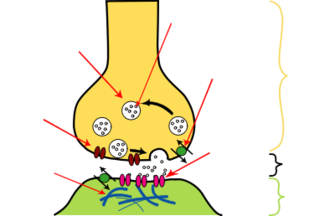« Prev Next »
Dravet Syndrome is a rare form of intractable epilepsy. Intractable seizures can not be controlled by standard medication. Individuals with Dravet Syndrome begin life with normal developments and experience an onslaught of seizures after reaching two years of age. And at age two, Charlotte was experiencing over 300 grand mal seizures per week. Treatment options were sparse and reaching the end of the rope when Charlotte's father, Matt, found a video of a California boy whose Dravet Syndrome was successfully being treated with cannabis (Cannabis sativa). The strain of cannabis was low in tetrahydrocannabinol (THC), the psychoactive compound in marijuana and high in cannabidiol (CBD), which has medicinal properties without psychoactivity. Studies show that CBD has the ability to quiet the excessive electrical and chemical activity in the brain that causes seizures.
Due to Charlotte's young age, health professionals were wary about a medical marijuana treatment option. However, the Stanley Brothers, one of Colorado's largest marijuana growers, soon came to mind. The six brothers were crossbreeding a strain of marijuana that was high in CBD and low in THC. After an extensive debate, it was decided that Charlotte would receive a dose of cannabis oil twice a day in her food. It was found that three to four milligrams of oil per pound of Charlotte's body weight were able to stop and limit the seizures to only two times a day. The marijuana strain that Charlotte and 41 other patients use to relieve symptoms of diseases such as epilepsy and cancer has been named Charlotte's Web in respect to the little girl who gave doctors a new outlook for medical marijuana.
There are eight medical conditions for which patients can use cannabis- cancer, glaucoma, HIV/AIDS, muscle spasms, seizures, severe pain, severe nausea and cachexia or dramatic weight loss and muscle atrophy. There are over 400 natural components in medical marijuana, and 80 of these are solely found in cannabis. These eighty compounds are known as cannabinoids, and they relieve symptoms of diseases by attaching to receptors in the brain that look for similar compounds that occur in the human body, e.g. dopamine. There are five major groups of cannabinoids that have particularly unique medicinal properties, and each one produces different physical and psychological effects. This is how different strains of medical marijuana can be bred to the specific treatment of various symptoms. Each strain contains varying amounts of each cannabinoid.
How the Endocannabinoid System Works: How THC Affects the Brain and Body
Cannabinoids, the active ingredient in medical marijuana, works in the brain via the newly discovered endocannabinoid (EC) system. The EC system is a communication system in the brain and body that regulates many important functions. The natural chemicals produced by the body that interact within the EC system are called cannabinoids, and they react with neural receptors to relieve painful symptoms of serious diseases.

How is Charlotte’s
Web Made?
To extract high concentrations of CBD for medical cannabis, chemists at the Stanley brothers’ lab soak high-CBD marijuana in food-grade alcohol to extract cannabinoids. The solution is then heated in a rotary evaporator to remove the alcohol, leaving behind a high-CBD concentrate that is diluted with olive oil.

Throughout the process, a high-performance liquid chromatography (HPLC) machine is used to measure the ratio between CBD and THC in the solution. For medical marijuana patients, a higher CBD concentration is desired, and the Stanley brothers aim for a 30:1 ratio of CBD to THC in order to achieve anti-epileptic effects with negligible psychoactive effects.
As the debate over the legalization of medical cannabis spurs on, it is imperative to realize the beneficial effects that the plant has provided for numerous individuals with serious diseases.
References:
Kile, M. "Need to Know: The science behind medical marijuana." Aljazeera America. March 6, 2015
Young, S. "Marijuana stops child's severe seizures." CNN. August 7, 2013
Compassionate Sciences. Cellular Biology: How Cannabis Works in the Body (2013).
Scholastic Press. The Science of the Endocannabinoid System: How THC Affects the Brain and the Body (2011).
United Patients Group. The Therapeutic Uses of Cannabis and Cannabinoids (2015).
Images Credits:
1.The Synaptic Gap Image is by Wikipedia users Nrets and Looie496 and is distributed via Wikimedia Commons under a CC-BY license.
2. HPLC Image is by Wikipedia user Kjaergaard and is in the public domain.






















